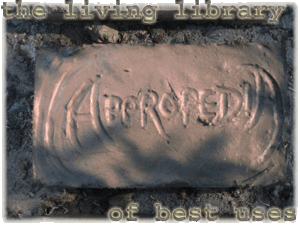m (→ABSTRACT) |
|||
| Line 5: | Line 5: | ||
<center> | <center> | ||
MIT's [http://web.mit.edu/d-lab/ D-lab] developed a method to turn agricultural wastes into affordable smokeless fuels, such as [http://web.mit.edu/d-lab/portfolio/sugarcanecharcoal.htm sugarcane charcoal] and corn cob charcoal. This agricultural waste charcoal has the potential to combat deforestation and reduce the dangerous effects of indoor cooking fires. | MIT's [http://web.mit.edu/d-lab/ D-lab] developed a method to turn agricultural wastes into affordable smokeless fuels, such as [http://web.mit.edu/d-lab/portfolio/sugarcanecharcoal.htm sugarcane charcoal] and corn cob charcoal. This agricultural waste charcoal has the potential to combat deforestation and reduce the dangerous effects of indoor cooking fires. One limiting factor in the adoption of this technology is the need for a charcoal crusher. | ||
Burning carbonized cobs produces less smoke than regular biomass fuels, but the carbonized cobs produce a hazardous level of carbon monoxide. D-lab developed a device to turn charcoal powder into a dense compact briquette that burns safely, but it is difficult to crush the carbonized cobs into a charcoal powder without inhaling dangerous amounts of charcoal dust. Our team's charcoal crushing device addresses the gap in this alternative fuel process. | Burning carbonized cobs produces less smoke than regular biomass fuels, but the carbonized cobs produce a hazardous level of carbon monoxide. D-lab developed a device to turn charcoal powder into a dense compact briquette that burns safely, but it is difficult to crush the carbonized cobs into a charcoal powder without inhaling dangerous amounts of charcoal dust. Our team's charcoal crushing device addresses the gap in this alternative fuel process. | ||
Revision as of 03:39, 5 August 2008
ABSTRACT
MIT's D-lab developed a method to turn agricultural wastes into affordable smokeless fuels, such as sugarcane charcoal and corn cob charcoal. This agricultural waste charcoal has the potential to combat deforestation and reduce the dangerous effects of indoor cooking fires. One limiting factor in the adoption of this technology is the need for a charcoal crusher.
Burning carbonized cobs produces less smoke than regular biomass fuels, but the carbonized cobs produce a hazardous level of carbon monoxide. D-lab developed a device to turn charcoal powder into a dense compact briquette that burns safely, but it is difficult to crush the carbonized cobs into a charcoal powder without inhaling dangerous amounts of charcoal dust. Our team's charcoal crushing device addresses the gap in this alternative fuel process.
For further information contact the team at: mailto:crushers@mit.eduTeam Information
- Joshua Cholobesa, Mumbwa District Councilor, Zambia
- Nathan Cooke, Product Design, Art Center College of Design in Pasadena, USA
- Bernard Kiwia, Mechanic and Electrician, Instructor of Appropriate Technologies at Global Alliance Vijana Centre, Tanzania
- Sumit Pahwa, Manufacturing Engineering, Sant Longowa Institute of Engineering and Technology, India
- Jessica Vechakul, Mechanical Engineering, MIT, USA
Introduction
Problem Definition
More than two billion people use wood, charcoal, dung or agricultural residues as the primary fuel for their cooking and heating needs, leading to significant health, economic and environmental consequences:
- Almost 2 million deaths each year are caused by breathing smoke from indoor cooking fires
- Respiratory infections are the leading cause of death of young children worldwide
- An estimated 50 billion hours are spent collecting firewood each year
- In some areas where wood and charcoal are scarce, more than a quarter of a family’s income is spent on fuel
Understanding the Market
To make bullets use the asterix:
- Like this
- and like this
- and two for the next indent
- and back to one...
To make a numbered list use the pound sign:
- Like this
- and like this
Project Requirements
Describe team goals here.
Design
Describe your design here.

Here is some help uploading files.
next level heading
You may need deeper level headings. Just keep adding equal signs to get that.
Costs
| header 1 | header 2 | header 3 |
|---|---|---|
| row 1, cell 1 | row 1, cell 2 | row 1, cell 3 |
| row 2, cell 1 | row 2, cell 2 | row 2, cell 3 |
See Help:Tables for more.
Discussion
Your discussion.
Next Steps
The next steps.
Conclusions
Your conclusions.
Contact details
Add your contact information.